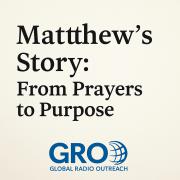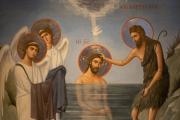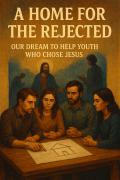Introduction
The concept of the end times has been a central theme in Christian theology for centuries. From the early days of the Church, beliebers have looked forward to the fulfillment of prophecies concerning the return of Jesus Christ and the establishment of His eternal kingdom. Integral to this eschatological narrative is the figure of the Antichrist—a powerful and malevolent leader who will rise to deceive the nations and wage war against God's people. Understanding the roles of the Antichrist and the Second Coming of Jesus is essential for Christians as they navigate their faith in a world marked by uncertainty and moral decline.
This article delves into the biblical prophecies surrounding the Antichrist and the Second Coming of Jesus, exploring their significance within Christian doctrine. By examining these key events, we can better comprehend the nature of spiritual warfare and the ultimate victory of Christ over evil. The goal is to offer a clear, scripturally grounded perspective that strengthens the faith of believers and encourages vigilance in these uncertain times.
Who is the Antichrist?
The term "Antichrist" conjures images of a charismatic yet sinister figure who will emerge in the last days to oppose Christ and deceive the world. The word itself comes from the Greek "antichristos," meaning "against Christ" or "in place of Christ." The concept is rooted in several New Testament passages, where the Antichrist is described as a false messiah who will lead many astray.
In the epistles of John, the Antichrist is introduced as a singular figure who embodies the spirit of opposition to Christ. In 1 John 2:18, the apostle writes, "Children, it is the last hour; and as you have heard that antichrist is coming, so now many antichrists have come. Therefore, we know that it is the last hour." This passage not only refers to the coming of a specific Antichrist but also highlights the existence of multiple antichrists—individuals and ideologies that oppose the teachings of Christ.
The apostle Paul also alludes to the Antichrist in his second letter to the Thessalonians, describing him as the "man of lawlessness" who exalts himself above all that is called God or worshipped (2 Thessalonians 2:3-4). This figure will deceive the world through false signs and wonders, leading many to apostasy. According to Paul, the Antichrist's appearance will precede the Day of the Lord, making him a pivotal character in end-times prophecy.
The Spirit of Antichrist
Beyond the notion of a singular Antichrist, the New Testament speaks of the "spirit of Antichrist"—a pervasive influence that opposes Christ and His teachings. In 1 John 4:3, it is written, "And every spirit that does not confess Jesus is not from God. This is the spirit of the antichrist, which you heard was coming and now is in the world already." This passage emphasizes that the spirit of Antichrist is not confined to a single individual but is an active force throughout history.
The spirit of Antichrist manifests in various forms, from false doctrines and deceptive ideologies to the persecution of Christians. Historical examples include the rise of heresies in the early Church, the persecution under Roman emperors, and more modern forms of opposition to Christian values. This spirit is characterized by a rejection of Christ's divinity, a distortion of biblical truths, and an active effort to undermine the Christian faith.
In the context of the end times, the spirit of Antichrist serves as a precursor to the arrival of the Antichrist himself. It conditions the world to accept deception and prepares the way for the ultimate rebellion against God. Understanding this spirit is crucial for Christians, as it helps them to discern the forces at work in the world and to remain steadfast in their faith.
Biblical Prophecies About the Antichrist
The figure of the Antichrist is woven throughout biblical prophecy, with references found in both the Old and New Testaments. These prophecies provide a detailed picture of the Antichrist’s character, his rise to power, and his eventual downfall. Understanding these prophecies is crucial for grasping the broader narrative of the end times as depicted in Christian theology.
One of the earliest references to a figure resembling the Antichrist is found in the Book of Daniel. In Daniel 7:8, the prophet describes a vision of a "little horn" that rises among ten horns, representing a powerful king who will speak against the Most High and oppress His saints. This "little horn" is widely interpreted as a precursor to the Antichrist, a ruler who will embody blasphemy and rebellion against God.
The New Testament provides further insights into the Antichrist’s role in the end times. In the Book of Revelation, the Apostle John presents a vivid portrayal of a beast rising from the sea, symbolizing the Antichrist (Revelation 13:1-10). This beast is described as having ten horns and seven heads, with blasphemous names written on its heads. The beast will receive power from the dragon (Satan) and will be worshipped by all whose names are not written in the Book of Life. This imagery underscores the Antichrist's role as a global leader who will command authority and reverence from a deceived world.
The Antichrist's Rise to Power
The rise of the Antichrist is depicted as a time of great deception and spiritual darkness. According to 2 Thessalonians 2:9-10, the Antichrist will come with "all power and false signs and wonders," leading those who refuse to love the truth into a state of delusion. This deception will be so powerful that it will convince many to follow the Antichrist, believing him to be a messianic figure or a savior of humanity.
Central to the Antichrist's rise will be the work of false prophets who will perform miraculous signs to bolster his credibility. These prophets will persuade the masses to worship the Antichrist and to accept his mark—a symbol of allegiance that will have severe spiritual and physical implications. The rise of the Antichrist will be marked by a global acceptance of his authority, driven by the widespread abandonment of biblical truths and the embrace of false ideologies.
The Antichrist’s ascension will not occur in isolation but will be facilitated by a world increasingly conditioned to reject the truth of the Gospel. This period of spiritual decline, coupled with political and social upheaval, will create a fertile ground for the Antichrist’s deception. The rise of the Antichrist will signify the beginning of the Tribulation, a time of unprecedented suffering and persecution for believers.
The Tribulation Period
The Tribulation is a central event in Christian eschatology, marking a seven-year period of intense suffering, persecution, and divine judgment. According to Jesus' discourse in Matthew 24:21, it will be a time of "great tribulation, such as has not been from the beginning of the world until now, no, and never will be." The Antichrist will play a significant role during this period, exerting his influence over the world and targeting believers for persecution.
During the Tribulation, the Antichrist will establish himself as a global ruler, consolidating power and enforcing a system that demands absolute allegiance. One of the most chilling aspects of this period is the introduction of the "Mark of the Beast" (Revelation 13:16-17). This mark will be required for all economic transactions, effectively marginalizing and persecuting those who refuse it. Accepting the mark will signify submission to the Antichrist, while rejecting it will result in severe consequences, including economic exclusion and death.
The Tribulation will also be characterized by widespread apostasy as many fall away from the faith due to the pressure and deception exerted by the Antichrist. The faithful remnant of believers will face intense persecution, as the Antichrist seeks to eradicate any opposition to his rule. Despite the darkness of this period, the Bible assures that God’s judgment is imminent, and the Tribulation will ultimately culminate in the Antichrist's defeat.
The Battle of Armageddon
As the Tribulation reaches its climax, the world will be drawn into the final and most decisive battle in human history—Armageddon. The term "Armageddon" comes from the Hebrew "Har-Magedon," meaning "Mount of Megiddo," a site in Israel historically associated with warfare. According to Revelation 16:16, the kings of the earth will gather at Armageddon under the influence of demonic spirits to wage war against God.
Armageddon represents the ultimate confrontation between the forces of good and evil. The Antichrist, along with his armies, will lead a global coalition against Israel, seeking to destroy God's chosen people and defy His sovereignty. However, this battle will not be fought on equal terms. Revelation 19:11-16 depicts Jesus Christ returning from heaven, riding on a white horse, and leading the armies of heaven to decisively defeat the Antichrist and his followers.
The Battle of Armageddon is not just a military conflict; it is a spiritual showdown that culminates in the triumph of divine justice. The Antichrist and the false prophet will be captured and thrown alive into the lake of fire (Revelation 19:20), marking the end of their reign of terror. This event will pave the way for the establishment of Christ’s millennial kingdom on earth.
The Second Coming of Jesus Christ
The Second Coming of Jesus Christ is the central hope of Christian eschatology. Unlike His first coming, which was marked by humility and sacrifice, His return will be in glory and power. Jesus Himself promised His return, assuring His disciples in John 14:1-3, "I will come again and will take you to myself, that where I am you may be also." The Second Coming is anticipated by believers as the moment when Christ will fully establish His kingdom and bring an end to all suffering and evil.
The Bible outlines several signs that will precede Jesus' return, including cosmic disturbances, the gathering of the nations against Israel, and the appearance of the Antichrist. Matthew 24:29-31 describes the immediate aftermath of the Tribulation: "The sun will be darkened, and the moon will not give its light; the stars will fall from heaven, and the powers of the heavens will be shaken. Then will appear in heaven the sign of the Son of Man, and then all the tribes of the earth will mourn, and they will see the Son of Man coming on the clouds of heaven with power and great glory."
When Jesus returns, He will do so visibly and triumphantly, as described in Revelation 19:11-16. He will come as a conquering king, defeating the Antichrist, judging the nations, and establishing His reign of peace and righteousness on earth. The Second Coming will mark the end of the present age and the beginning of a new era under Christ's rule.
The Defeat of the Antichrist
The climax of the end times narrative is the defeat of the Antichrist by Jesus Christ. This victory is not just a physical defeat but a spiritual one, symbolizing the triumph of good over evil and truth over deception. Revelation 19:19-20 describes the scene: "And I saw the beast and the kings of the earth with their armies gathered to make war against him who was sitting on the horse and against his army. And the beast was captured, and with it the false prophet who in its presence had done the signs by which he deceived those who had received the mark of the beast and those who worshiped its image. These two were thrown alive into the lake of fire that burns with sulfur."
The defeat of the Antichrist will bring an end to his reign of terror and initiate the binding of Satan, who will be imprisoned for a thousand years (Revelation 20:1-3). This period, known as the Millennium, will be characterized by peace, justice, and the direct rule of Christ on earth. The Antichrist's fall serves as a powerful reminder of God's sovereignty and the inevitability of His justice.
The Millennial Reign of Christ
The Millennium, a thousand-year reign of Christ on earth, is a significant aspect of Christian eschatology. During this time, Satan will be bound, and Christ will rule with His saints in a period of unprecedented peace and righteousness (Revelation 20:1-6). The Millennium represents the fulfillment of God's promises to Israel and the realization of His kingdom on earth.
This period will be marked by the restoration of creation, the renewal of justice, and the absence of war and suffering. The saints, those who have remained faithful to Christ, will reign with Him, exercising authority and judgment over the nations. The Millennium will be a time of great blessing for the people of God, as they experience the fullness of His presence and the completion of His redemptive work.
However, the Millennium will also conclude with one final test. At the end of the thousand years, Satan will be released for a short time and will gather the nations for a final rebellion against God (Revelation 20:7-10). This rebellion will be swiftly crushed, and Satan will be cast into the lake of fire, where the Antichrist and the false prophet already reside. This event will lead to the final judgment and the establishment of the eternal state.
The Eternal State: New Heavens and New Earth
Following the final judgment, the present heaven and earth will pass away, and God will create a new heaven and a new earth (Revelation 21:1-4). This eternal state will be the ultimate fulfillment of God's plan for His creation—a place where sin, death, and suffering are no more. The new creation will be characterized by perfect peace, righteousness, and the uninterrupted presence of God.
The Apostle John provides a glimpse of this glorious future in Revelation 21:3-4: "And I heard a loud voice from the throne saying, 'Behold, the dwelling place of God is with man. He will dwell with them, and they will be his people, and God himself will be with them as their God. He will wipe away every tear from their eyes, and death shall be no more, neither shall there be mourning, nor crying, nor pain anymore, for the former things have passed away.'"
In the new creation, the redeemed will dwell with God in perfect harmony, enjoying eternal life and the fullness of His glory. The Antichrist, along with all who have rejected Christ, will face eternal separation from God in the lake of fire. The eternal state is the culmination of God's redemptive plan, offering believers the hope of a future where all things are made new.
Theological Implications and Christian Response
The prophecies concerning the Antichrist and the Second Coming of Jesus have profound theological implications for Christians today. They underscore the reality of spiritual warfare, the certainty of Christ's return, and the ultimate victory of God's kingdom. In light of these truths, Christians are called to live with vigilance, faith, and hope, always prepared for the return of their Savior.
Vigilance is essential, as the spirit of Antichrist is already at work in the world, seeking to deceive and lead many astray. Believers must remain grounded in the truth of Scripture, discerning the signs of the times and resisting the allure of false teachings. Faith is equally important, as it anchors believers in the promises of God, assuring them of His presence and power even in the darkest of times.
Finally, hope is the hallmark of the Christian response to the end times. The return of Jesus Christ is the ultimate hope for believers, offering the promise of a future free from suffering and evil. This hope motivates Christians to live with purpose, sharing the Gospel with others and preparing their hearts for the day when they will see their Lord face to face.
Conclusion
The coming of the Antichrist and the Second Coming of Jesus are central events in Christian eschatology, carrying deep significance for the faith and life of believers. While the rise of the Antichrist will bring a period of unprecedented deception and suffering, it will ultimately be overcome by the power and glory of Christ at His return. The defeat of the Antichrist and the establishment of Christ's kingdom offer a powerful reminder of God's sovereignty and the surety of His promises.
As Christians, we are called to live in the light of these truths, remaining vigilant, faithful, and hopeful as we await the return of our Savior. In the end, the victory belongs to Christ, and those who stand firm in their faith will share in the glory of His eternal kingdom.
Note from writer-
I am Gabriel, my country is at political and natuaral disaster. Pray for my country.
Read more








